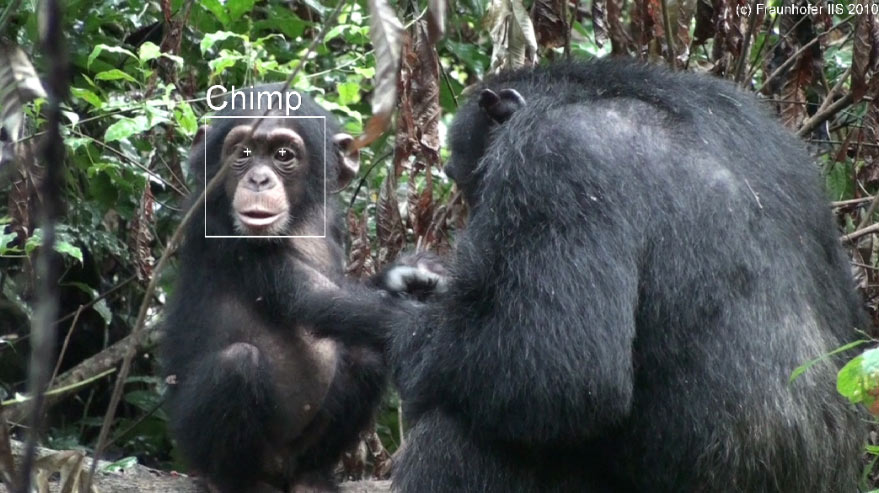Smile! Face Recognition IDs Chimps from Photos

Facial recognition isn't just for humans anymore — similar programs run on apes could help park rangers help identify chimps and gorillas, scientists have found.
This kind of software could help keep better counts on wildlife and help to better protect them, researchers added.
Scientists often put cameras out in the field to capture photos of elusive wildlife, such as cheetahs and leopards. Using this method, however, researchers are not always sure whether or not they are taking pictures of the same animal each time. Knowing how many members of a species are living in a specific area is vital if endangered animals are to be protected effectively.
Instead of spending hours analyzing pictures from video and photo traps — a painstaking and time-consuming job that is subjective and susceptible to error — scientists are now developing ways to identify animals automatically. [Pictures of Ape Faces ID'ed with Software]
In the new study, researchers use state-of-the-art face-recognition algorithms originally developed for the human face, in combination with a system that sifts through the images and picks out only the ones in which the animals' faces can be seen. The system was also equipped with machine-learning capabilities so the program could improve over time.
With a group of 24 chimpanzees at Leipzig Zoo in Germany, the scientists achieved a facial recognition rate of 83 percent.
"The most exciting thing was that it actually worked," researcher Alexander Loos, a computer scientist at the Fraunhofer Institute for Digital Media Technologies in Ilmenau, Germany, told LiveScience.
Sign up for the Live Science daily newsletter now
Get the world’s most fascinating discoveries delivered straight to your inbox.
However, this high success rate depended on high-quality photos. With poor light or partially hidden faces, "the recognition rates quickly drop to below 60 percent," Loos cautioned.
Since it is much more difficult to take high-quality pictures in the wild, the researchers intend to add further algorithms to boost face recognition rates. These will not just analyze the entire face, as the current generation of software does, but will also look at specific features such as the eyes, nose and mouth.
The new software also analyzes audio to try to identify various noises each ape makes, such as drumming of their chests and threatening grunts. The result could also help recognize specific individuals. [8 Ways Apes Act Like Us]
In addition, the researchers are working on ways to automatically recognize ape activity from video, such as walking, playing, grooming, eating, tool use and fighting. "That is very important for biologists studying social interaction and behavior," Loos said.
Currently, the face detection and face recognition technologies are separate from one another. The researchers are working on an application that includes both.
Right now, the researchers are focusing on primates such as chimps, gorillas and bonobos, but they hope with further development, "it would be possible to identify individuals of other species as well, especially species with characteristic body markings like zebras, cheetahs and tigers," Loos said.
The researchers at the Fraunhofer Institutes for Integrated Circuits and Digital Media Technology as well as at the Max Planck Institute for Evolutionary Anthropology hope to complete their SAISBECO project by its end in 2013.










